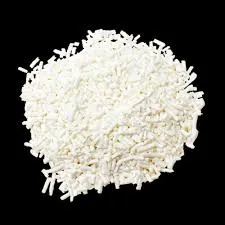
Understanding the Role of Sulfur Dioxide as a Food Preservative in Modern Cuisine
The Role of Sulfur Dioxide as a Food Preservative
Sulfur dioxide (SO2) is a colorless gas with a pungent odor that has been utilized for centuries as a preservative in the food industry. Recognized for its antioxidant properties, sulfur dioxide plays a critical role in prolonging the shelf life of various food products. It is especially prevalent in dried fruits, wines, and some processed foods, where it aids in preserving both flavors and colors.
Historical Context
The use of sulfur dioxide dates back to ancient civilizations, where it was employed in various forms for food preservation. The ancient Greeks and Romans recognized its benefits in winemaking, using the gas to prevent spoilage and maintain the quality of their wines. Over time, the application of sulfur dioxide expanded, and today it remains a widely accepted practice in food preservation worldwide.
Mechanism of Action
The effectiveness of sulfur dioxide as a preservative is attributed to its ability to inhibit the growth of microorganisms, such as bacteria and molds. Additionally, it acts as an intense antioxidant, effectively slowing down the oxidation process that often leads to the degradation of flavor, color, and nutritional value in food. When applied to dried fruits, for instance, it helps retain their vibrant color and desirable freshness, making them more appealing to consumers.
Applications in the Food Industry
so2 food preservative

Sulfur dioxide is predominantly found in the wine industry, where it is used to kill wild yeasts and bacteria before fermentation and to stabilize the finished product. This prevents spoilage and maintains the wine's quality over time. Furthermore, it is commonly added to dried fruits like apricots, raisins, and prunes to maintain their color and prevent darkening. In addition, sulfur dioxide is used in the production of some processed vegetables and canned goods, ensuring their safety and longevity.
Regulatory Guidelines
Despite its benefits, the use of sulfur dioxide is regulated in many countries due to potential health concerns. Some individuals are sensitive to sulfites, which can trigger allergic reactions such as asthma or headaches. Consequently, food products containing sulfur dioxide must be labeled appropriately to inform consumers. Regulatory bodies like the Food and Drug Administration (FDA) in the United States and the European Food Safety Authority (EFSA) have established permissible levels of sulfur dioxide in various food items, ensuring that its use remains safe for the general public.
Health and Safety Considerations
While sulfur dioxide is generally recognized as safe when used within regulatory limits, it is essential for consumers to be aware of their sensitivities. For those who experience adverse reactions, avoiding foods fortified with sulfur dioxide is advisable. On the other hand, its presence in foods has been linked with extending their shelf life, consequently reducing food waste—a significant concern in today’s world.
Conclusion
In summary, sulfur dioxide serves as a vital food preservative that enhances the safety and longevity of various products. Its ability to inhibit microbial growth and prevent oxidation makes it indispensable in industries like winemaking and dried fruit production. With the necessary regulatory guidelines in place, sulfur dioxide can be used safely while helping to reduce food waste. As consumers become increasingly informed about food additives, understanding the role of sulfur dioxide can empower them to make safer choices while enjoying the benefits of preserved foods. As we look to the future, continued research and innovation will be essential in finding the right balance between effective preservation techniques and consumer safety.
-
Buy High-Quality Trichloroisocyanuric Acid for Sale | TCCA 90% SupplierNewsAug.30,2025
-
Pure Sodium Dichloroisocyanurate Dihydrate | Powerful DisinfectantNewsAug.29,2025
-
Industrial Chemicals: Quality & Purity for Every IndustryNewsAug.28,2025
-
Nitrile Rubber Honoring Strict Production StandardsNewsAug.22,2025
-
Aspartame Ingredients Honoring Food Safety ValuesNewsAug.22,2025
-
Fertilizer for Balanced Plant NutritionNewsAug.22,2025
-
Cyanide Gold Processing with High Purity AdditivesNewsAug.22,2025
Hebei Tenger Chemical Technology Co., Ltd. focuses on the chemical industry and is committed to the export service of chemical raw materials.
-

view more DiethanolisopropanolamineIn the ever-growing field of chemical solutions, diethanolisopropanolamine (DEIPA) stands out as a versatile and important compound. Due to its unique chemical structure and properties, DEIPA is of interest to various industries including construction, personal care, and agriculture. -

view more TriisopropanolamineTriisopropanolamine (TIPA) alkanol amine substance, is a kind of alcohol amine compound with amino and alcohol hydroxyl, and because of its molecules contains both amino and hydroxyl. -

view more Tetramethyl Thiuram DisulfideTetramethyl thiuram disulfide, also known as TMTD, is a white to light-yellow powder with a distinct sulfur-like odor. It is soluble in organic solvents such as benzene, acetone, and ethyl acetate, making it highly versatile for use in different formulations. TMTD is known for its excellent vulcanization acceleration properties, which makes it a key ingredient in the production of rubber products. Additionally, it acts as an effective fungicide and bactericide, making it valuable in agricultural applications. Its high purity and stability ensure consistent performance, making it a preferred choice for manufacturers across various industries.





